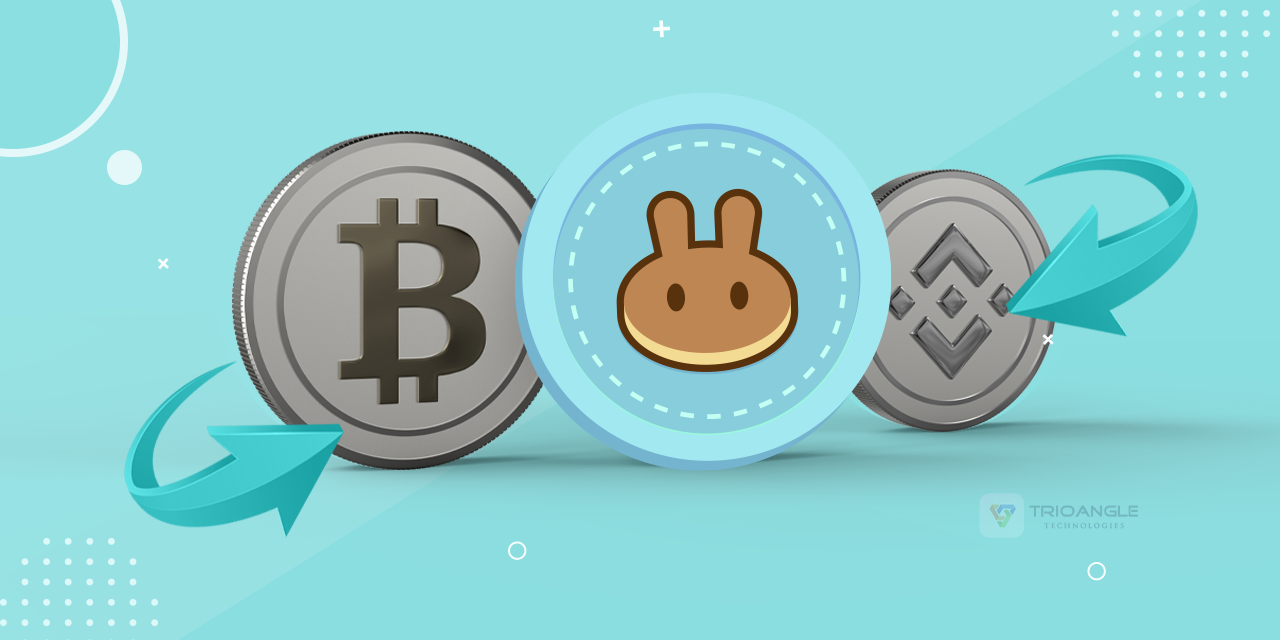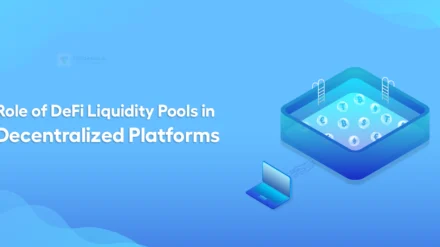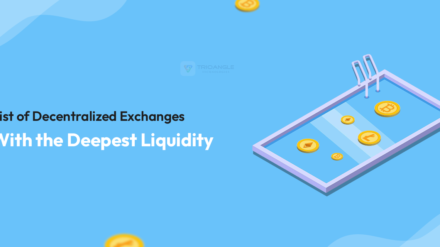In the dynamic world of decentralized finance (DeFi), PancakeSwap clone script has made a significant mark as one of the most popular decentralized exchanges (DEX) on the Binance Smart Chain (BSC).
Its success has piqued the interest of many entrepreneurs and developers who are keen on creating similar platforms.
This detailed guide aims to walk you through the process of developing a PancakeSwap clone script, covering everything from initial planning to deployment.
By the end of this guide, you’ll have a comprehensive understanding of how to create a PancakeSwap clone script and launch your own DeFi platform.
What is a PancakeSwap Clone Script?
A PancakeSwap Clone Script is a pre-built, customizable software that replicates the core functionalities of PancakeSwap.
It includes essential features like token swaps, liquidity pools, yield farming, staking, and more.
This script serves as a blueprint, significantly reducing the time and cost involved in developing a decentralized exchange from scratch.
Key Features of PancakeSwap Clone Script
Before we delve into the development process, it’s crucial to understand the key features that make PancakeSwap successful and should be included in your clone script:
- Decentralized Exchange (DEX): Enables users to swap tokens seamlessly with low transaction fees.
- Liquidity Pools: Allows users to add liquidity and earn rewards, providing liquidity for token swaps.
- Yield Farming: Users can stake their tokens in various pools to earn additional tokens, promoting user engagement and token circulation.
- Staking: Users can lock their tokens and earn staking rewards, encouraging long-term investment.
- Lottery System: A periodic lottery that engages users and adds a gamified aspect to the platform.
- Analytics: Provides detailed insights into trading volumes, liquidity, and other vital metrics.
- Wallet Integration: Supports various wallets like MetaMask, Trust Wallet, etc., for seamless user transactions.
- User-Friendly Interface: An intuitive and responsive interface to enhance user experience.
Why Opt for a PancakeSwap Clone Script Over Other DeFi Exchanges?
Choosing a PancakeSwap script over other decentralized finance (DeFi) exchanges offers several distinct advantages, making it a preferred choice among developers and entrepreneurs in the blockchain space.
Unique Features of PancakeSwap Clone Software
Bridging Concept
One of the standout features of PancakeSwap clone software is its ability to incorporate bridging concepts.
This means users can seamlessly convert crypto tokens from one blockchain (like Binance Smart Chain) to tokens on other blockchains such as Tron, Ethereum, and more.
This interoperability is rare among other DEX platforms, providing users with greater flexibility and expanding the platform’s utility across multiple blockchain ecosystems.
Lower Transaction Fees
PancakeSwap and its clones typically operate on blockchain networks like Binance Smart Chain (BSC), which are known for their lower transaction fees compared to Ethereum.
This cost-effectiveness attracts users who seek to minimize transaction costs while engaging in DeFi activities like token swapping, liquidity provision, and yield farming.
Familiar User Experience
As a clone of PancakeSwap, the platform inherits its intuitive user interface and user experience.
This familiarity makes it easier for users to navigate and engage with various features without a steep learning curve, enhancing overall user satisfaction and adoption.
High Liquidity and Volume
PancakeSwap script benefits from the liquidity and trading volume already established by the original PancakeSwap platform.
This liquidity depth ensures that users can execute trades swiftly and efficiently, with minimal slippage, thereby providing a reliable trading environment.
7 Key Steps to Create PancakeSwap Clone Script
Creating a PancakeSwap clone script can be approached in two primary ways: developing the platform from scratch or using an instant PancakeSwap clone script.
Each method has its pros and cons, and the choice largely depends on your specific needs, resources, and timeline.
In this blog, we’ll discuss creating a PancakeSwap clone using an instant PancakeSwap clone script.
Step 1: Define Your Requirements
The first step in creating a PancakeSwap clone script is to clearly define your requirements.
Identify the unique selling points (USPs) that will differentiate your platform from the original PancakeSwap.
This could include additional security features, unique tokenomics, or exclusive partnerships.
Understanding your target audience and their needs is crucial for tailoring your platform accordingly.
Step 2: Choose the Reliable Clone Script Provider
Creating a PancakeSwap clone script involves selecting a trustworthy provider who can deliver a reliable and customizable solution.
- Research Providers: Look for companies or developers online who specialize in DeFi and offer PancakeSwap clone scripts. Check forums, social media, and blockchain community platforms for recommendations.
- Check Reputation: Read reviews and testimonials from previous clients to gauge the provider’s reputation. Look for positive feedback about their script quality, support, and reliability.
- Customization Options: Ensure the provider offers customization options. Your clone script should be adaptable to your specific business needs, including UI/UX customization, feature additions, and smart contract adjustments.
- Support and Maintenance: Choose a provider that offers comprehensive support services, including technical support, updates, and security audits. This ensures your platform remains secure and operational post-launch.
- Cost Transparency: Understand the pricing structure upfront. Look for transparent pricing that includes script costs, customization fees, and ongoing maintenance expenses.
- Compliance and Legal Aspects: Verify that the provider complies with blockchain regulations and provides clear legal documentation. This protects your project from legal risks and ensures compliance with industry standards.
- Communication and Collaboration: Evaluate the provider’s communication channels and responsiveness. Effective communication is crucial for understanding project milestones, resolving issues promptly, and ensuring a smooth development process.
Step 3: Customize the Clone Script
Once you have chosen a provider, the next step is to customize the clone script to match your brand and functional requirements. This includes:
- UI/UX Customization: Adjust the user interface to align with your branding and ensure a user-friendly experience.
- Feature Customization: Add or modify features to meet your specific business needs. Common features include token swapping, staking, yield farming, and liquidity pools.
- Smart Contract Customization: Tailor the smart contracts to ensure they meet your platform’s requirements, ensuring they are secure and efficient.
Step 4: Integrate Cryptocurrency Wallets
To facilitate seamless transactions, integrate popular cryptocurrency wallets such as MetaMask, TrustWallet, and Binance Chain Wallet. This integration allows users to connect their wallets easily and manage their funds within your platform.
Step 5: Test the Platform
Thorough testing ensures the platform functions flawlessly and provides a secure environment for users. Types of testing to conduct include:
- Functional Testing: Verify all features and functionalities work as expected without errors or glitches.
- Security Testing: Perform security audits to identify and mitigate vulnerabilities in smart contracts, APIs, and overall platform security.
- Performance Testing: Test the platform’s performance under different load conditions to ensure it can handle high traffic and transaction volumes efficiently.
Step 6: Deploy on Binance Smart Chain (BSC)
Once testing is complete, deploy the smart contracts on the Binance Smart Chain. BSC is preferred for its low transaction fees and high efficiency compared to Ethereum. Ensure the deployment is smooth and all components are correctly integrated.
Step 7: Launch the Platform
Launching your PancakeSwap clone involves preparing for the platform’s introduction to the market. Consider these steps:
- Marketing and Promotion: Create a marketing strategy to generate awareness and attract users to your platform. Utilize social media, influencer partnerships, and targeted advertising campaigns.
- User Onboarding: Ensure the onboarding process is seamless and user-friendly to encourage initial user engagement.
- Community Engagement: Build and engage with a community of early adopters through forums, social media groups, and community events.
After the platform is launched, ongoing support and updates are essential to maintain its functionality, security, and competitiveness. Tasks include:
- Monitoring and Maintenance: Regularly monitor the platform for performance issues, bugs, and security threats. Address any issues promptly to maintain user trust.
- User Feedback: Gather and analyze user feedback to identify areas for improvement and prioritize feature updates.
- Feature Enhancements: Continuously evolve the platform by adding new features, improving existing ones, and staying updated with industry trends.
How Does a PancakeSwap Clone Work?
A PancakeSwap clone script utilizes the Automated Market Making (AMM) model to facilitate smooth and fast transactions within its decentralized exchange (DEX).
This approach simplifies liquidity provision by allowing users to participate directly with their digital assets after registering their wallets, thereby increasing liquidity on the platform.
Participants are incentivized with transaction fees and liquidity provider (LP) tokens.
Working Process of a PancakeSwap Clone
Let’s see the step-by-step breakdown of how a PancakeSwap clone operates:
- Wallet Connection: Users start by connecting their wallets such as MetaMask, Binance Chain Wallet, or TrustWallet to the PancakeSwap clone platform.
- Wallet Unlocking and Asset Deposit: Once connected, users unlock their wallets and deposit cryptocurrencies into liquidity pools for security and participation purposes.
- AMM Execution: The AMM mechanism guides users through the process of buying or selling tokens directly from the liquidity pools or other users on the platform. This automated process ensures that trades can be executed swiftly and efficiently.
- Earning Opportunities:
- Transaction Fees: Users earn a share of transaction fees generated from trades conducted on the platform.
- FLIP Tokens: Depending on the platform’s design, users may also earn FLIP tokens or other rewards as incentives for their participation.
- Liquidity Provider (LP) Tokens: By providing liquidity to the pools, users receive LP tokens representing their stake in the liquidity pool.
- Staking CAKE Tokens: Users can further enhance their earnings by staking CAKE tokens, the native token of PancakeSwap or its clone. Staking CAKE tokens often entitles users to additional rewards or governance rights within the ecosystem.
Why It Is Necessary to Develop a PancakeSwap Clone Script
Ethereum is currently the most popular blockchain network for DeFi applications, playing a crucial role in their global prominence.
Despite its potential, Ethereum has notable drawbacks, such as high gas fees and frequent network congestion, prompting users to seek alternatives.
This is where Binance Smart Chain (BSC) becomes relevant. BSC offers low transaction fees and minimal network congestion, attracting a larger audience and increasing platform popularity.
A PancakeSwap clone script aims to provide a smooth user experience while incorporating unique features to enhance site longevity and appeal.
Attractive Features of a PancakeSwap Clone Script
PancakeSwap boasts several distinctive features that contribute to its uniqueness and popularity:
- Automated Market-Making (AMM): Enhances the overall website performance and eliminates the need for intermediaries.
- Token Swapping: Offers rewards for users who regularly stake tokens on the site.
- Lottery Mechanisms: Allows users to participate in lotteries to win CAKE tokens, which can be used for various cryptocurrencies and withdrawals.
- Yield Farming: Enables users to earn CAKE tokens by providing liquidity to other cryptocurrency investors.
- Pooling: Users can pool their computing resources, boosting staking rewards. Miners earn various rewards and tokens for their contributions.
Advantages of Developing a PancakeSwap Clone
Creating a platform similar to PancakeSwap offers several benefits:
- Easy Token Exchange: Users can easily exchange tokens.
- Wallet Support: The platform can support various crypto wallets for asset storage and trading.
- Fluid Pairing: Utilizes the AMM model for smooth and straightforward pairing.
- Reward Mechanisms: Users can earn various rewards by staking tokens in their wallets.
- Smart Contract Implementation: Enhances user confidence through transparent and monitorable processes.
- Advanced Payment Gateway: Provides users with more options by incorporating advanced payment solutions.
- Enhanced Security: Clones offer robust security, making it difficult to alter, manipulate, or tamper with data.
Developing a PancakeSwap clone script allows you to leverage the benefits of Binance Smart Chain, providing a cost-effective, efficient, and user-friendly DeFi platform.
With the attractive features and advantages outlined, you can create a platform that meets user needs while offering a unique and rewarding experience.
How Much Does It Cost of PancakeSwap Clone Development
The cost of developing a PancakeSwap clone can vary significantly based on several factors:
- Geographical Location: Development costs can vary depending on the country or region where the development team is located. Rates may differ based on local economic factors, labor costs, and taxation.
- Customization of Features: The extent of customization required for the clone script will impact development costs. Additional features, security enhancements, UI/UX improvements, and integration of unique functionalities like cross-chain bridging will add to the overall development expenses.
- Development Company: The choice of a development company or team plays a crucial role in determining costs. Companies with extensive experience in blockchain development and DeFi projects may charge higher fees but offer expertise and reliability.
- Timeline: Urgency and project timelines can affect costs, as expedited development may require additional resources and manpower to meet deadlines.
Estimated Development Cost
While the exact cost of PancakeSwap clone development cannot be predicted precisely due to these variables, the development process typically starts at around $10,000.
This base cost covers basic functionalities and initial setup.
However, as you add more features, enhance security measures, and customize the platform to meet specific requirements, the overall development cost can increase accordingly.
On A Closure Note,
Creating a PancakeSwap clone script can be a lucrative venture in the DeFi space.
By following the steps outlined in this detailed guide, you can develop a robust and feature-rich decentralized exchange platform.
Whether you are an entrepreneur looking to enter the DeFi market or a developer seeking to expand your skills, a PancakeSwap clone script offers a solid foundation for success.
Embark on your pancakeswap clone development journey today and leverage the growing DeFi ecosystem to create a decentralized exchange that meets the needs of your target audience.
For more information on PancakeSwap clone development or to get a customized PancakeSwap clone script, feel free to reach out to us. Let’s build the future of DeFi together!
By following this structured approach, you can effectively create a PancakeSwap clone script and establish a successful DeFi platform.
Ready to start your DeFi journey?
Book Free Demo Today & see How PancakeSwap Clone Script Transform Your Business!








